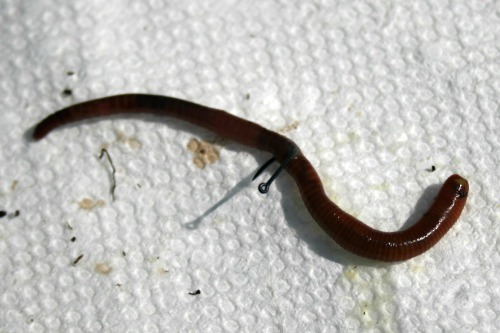Just How Red Wigglers Can Transform Your Composting Experience
The combination of red wigglers right into composting techniques provides a transformative method to throw away management and soil enrichment. Understanding the particular needs and benefits associated with preserving a flourishing worm population is essential for optimizing their capacity.
Benefits of Red Wigglers
Red wigglers, clinically understood as Eisenia fetida, are a foundation of reliable composting systems because of their impressive capacity to decay organic matter efficiently. These worms stand out in changing cooking area scraps, yard waste, and various other natural materials right into nutrient-rich compost, typically referred to as worm spreadings. Lake Hickory Bait. This process not only minimizes landfill waste but additionally contributes to lasting horticulture techniques
One of the key benefits of red wigglers is their high reproduction rate, enabling them to inhabit a composting setting swiftly. This quick multiplication enhances disintegration prices, causing faster garden compost manufacturing. In addition, red wigglers flourish in a varied variety of problems, making them versatile to various composting arrangements.

Establishing Your Worm Container
(Red Wiggler Express)To produce an effective worm bin for composting, careful attention must be provided to its layout and setting. An optimal worm container should be created of products that are sturdy yet permit required air movement, such as plastic or wood. The size of the bin can differ, yet a quantity of approximately 1 square foot per pound of worms is a great starting factor.
Make certain that the container has drainage holes to avoid water accumulation, which can lead to anaerobic problems detrimental to the worms. Furthermore, including air flow openings will help keep correct moisture levels and oxygen circulation.
Following, it is important to offer bed linen for the worms, which can consist of shredded newspaper, cardboard, or coconut coir. This bed linen not only supplies an environment for the worms yet additionally aids in wetness retention.
Placement the worm container in a location that maintains a temperature variety of 55-77 ° F(13-25 ° C) to enhance worm task. Prevent putting the container in straight sunshine or extreme temperature levels. By adhering to these standards, you can produce a conducive atmosphere for red wigglers, boosting the effectiveness of your composting process.
What to Feed Your Worms

(Hickory NC Worms For Sale)Red wigglers particularly appreciate soft, damp foods like watermelon peels, cucumber peels, and banana peels. It is vital to avoid feeding them citrus fruits, onions, and garlic, as these can be harmful to their wellness. Furthermore, prepared explanation foods, milk items, and meat must be purely stayed clear of, as they can cause odors and attract pests.
Providing a consistent feeding schedule will help keep your worm populace thriving while boosting the total performance of your composting efforts. By recognizing what to feed your worms, you lay the foundation for an effective and sustainable composting experience.
Preserving a Healthy Environment
Producing a flourishing composting environment for red wigglers calls for focus to their environment, as it directly influences their health and productivity. The suitable environment should keep a balanced dampness degree, commonly between 60-70%. Extreme dampness can result in anaerobic problems, while not enough moisture may dry out the worms.

The bed linen product in the garden compost should vary and shredded, integrating products like cardboard, paper, and coconut coir. This not just provides a comfortable environment however likewise functions as a food resource. Lake Hickory Bait. Consistently looking for odors or indications of parasites can aid determine potential issues before they intensify
Lastly, preserving a balanced pH degree, preferably in between 6 and 7, ensures a favorable environment for red wigglers, cultivating their capacity to process organic matter successfully. By addressing these variables, you can create a sustainable and productive composting ecological community.
Harvesting and Using Garden Compost
Collecting compost from a worm container is a gratifying process that transforms natural waste into nutrient-rich product for gardens and plants. As soon as the composting cycle is total, normally after 8-12 weeks, it's time to accumulate the vermicompost. The initial step includes dividing the red wigglers from the ended up garden compost. This can be done utilizing methods such as the "light" method, where worms are drawn in to light and can be scooped far from the leading layers, or by relocating the garden compost away of the bin and including fresh bed linen to the opposite side, urging the worms to move.
As soon as the worms are gotten rid of, the remaining compost can be looked to remove any type of larger particles or undecomposed product. This abundant garden compost can be used directly to garden beds, combined right into potting soil, or used as a top clothing for potted plants.
Verdict
Integrating red wigglers right into composting techniques substantially enhances the decay process and contributes to the manufacturing of nutrient-rich vermicompost. The resulting worm castings improve dirt framework, fertility, and microbial task, ultimately advertising much healthier plant development.